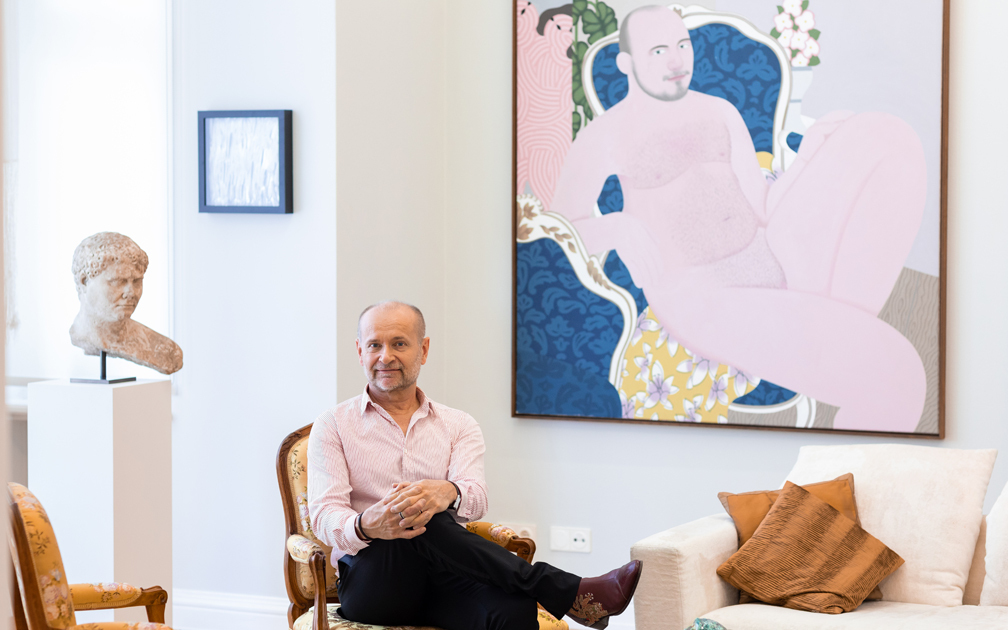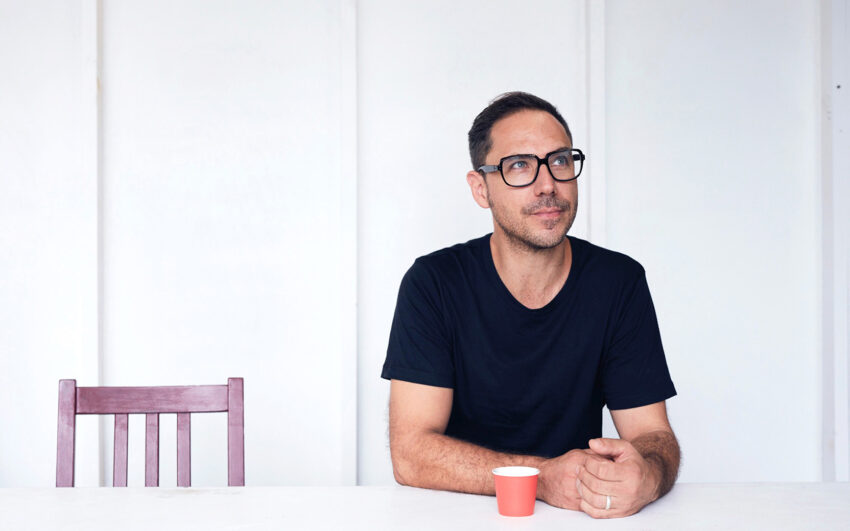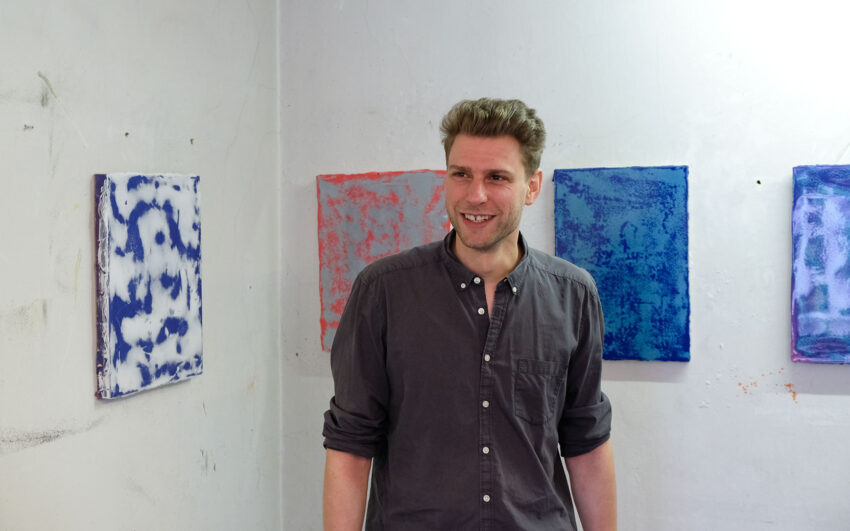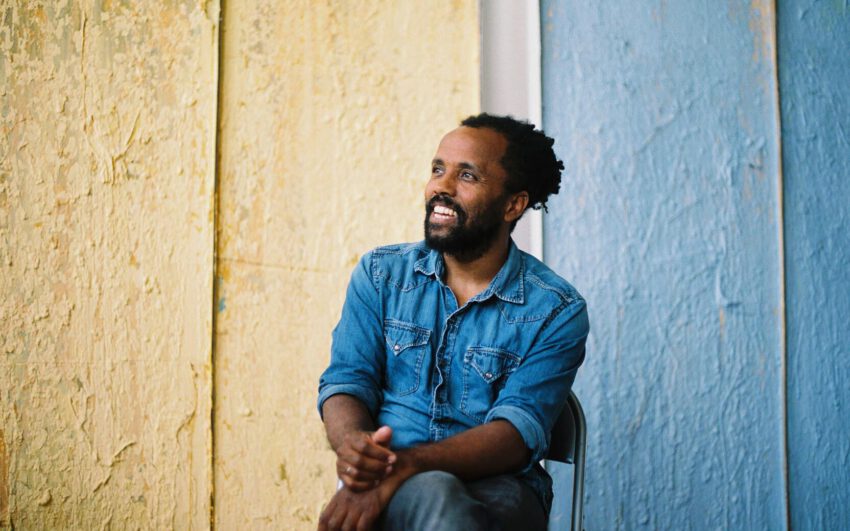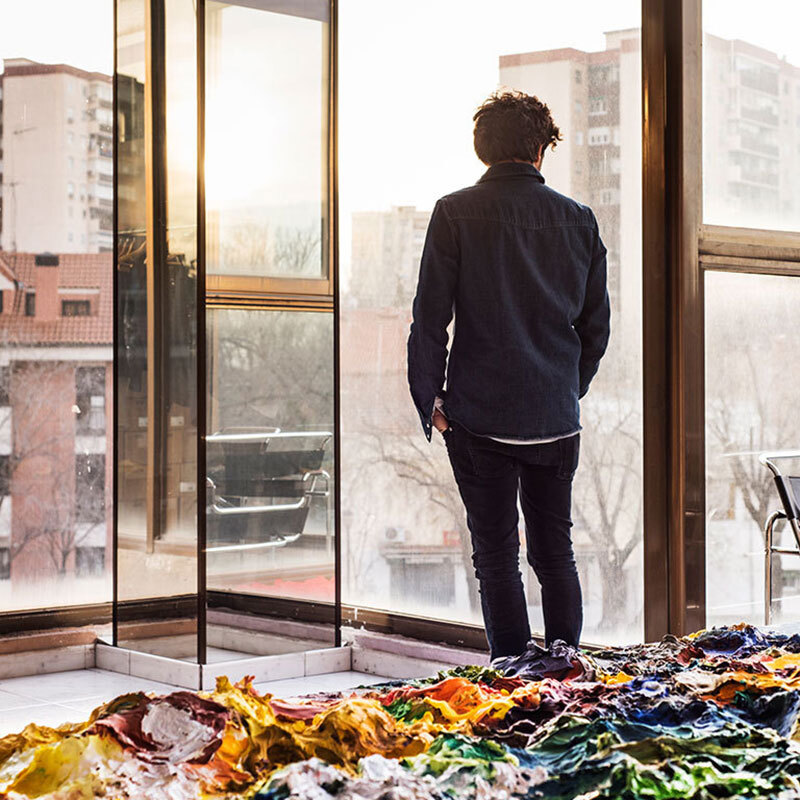The scene for contemporary art in Europe’s North is expanding and developing new dynamics as international collectors are watching the scene. With Nordic Notes we regularly cast the eye on the Nordic art and cultural scene, portraying its important actors.

Timo Miettinen is Chairman of the EM Group Oy in Finland and is one of the most famous Finnish collectors of contemporary art worldwide. The Miettinen Collection, which focuses primarily on painting, comprises more than 1,200 works by artists of different generations and nationalities. We met him at his house in his adopted home of Berlin and talked to him about his passion for collecting, his eye for recognizing talented young artists, and how the art historical canon is likely to change in the future.
Timo, how does a businessman like you come to be collecting art?
I have always been very interested in art. I started my career in the business world as a business-oriented engineer. Today, I am still chairman of the board of our family business EM Group in Helsinki and managing director of our Berlin real estate company MIV GmbH. For many years I worked for the electrical company Ensto, which is also one of our family businesses, but to enrich my life, I needed something else, and that was art, design, and architecture.
Have you always been interested in art?
Yes, I grew up with art. And the worst thing is: I'm a compulsive collector. I really am. The whole addiction is focused on collecting art. When I was a child, I already collected stamps and coins.
What was the first piece of art you bought?
My mother started collecting Finnish landscape and flower paintings in the 1960s and 1970s; some of them can be seen in my apartment, where I keep them as momentos of the past. I visited auctions with her; my father didn’t have time then, he ran the company, but my mother was an important influence in the development of my passion for art. When I was 14 years old, we went to an auction together, and that was where I bought my first painting, titled Heijastuksia (1928) and was painted by Eero Jämefelt, it’s a landscape, a view of Lake Tuusula near Helsinki. So I am especially pleased that we have been able to organize this wonderful exhibition The Simple Sense of Existence depicting wild flowers and meadows in works by Eemil Karila. This will probably be the last exhibition that is not part of a collection presentation and with it the circle beginning with landscapes and flowers will be closed.
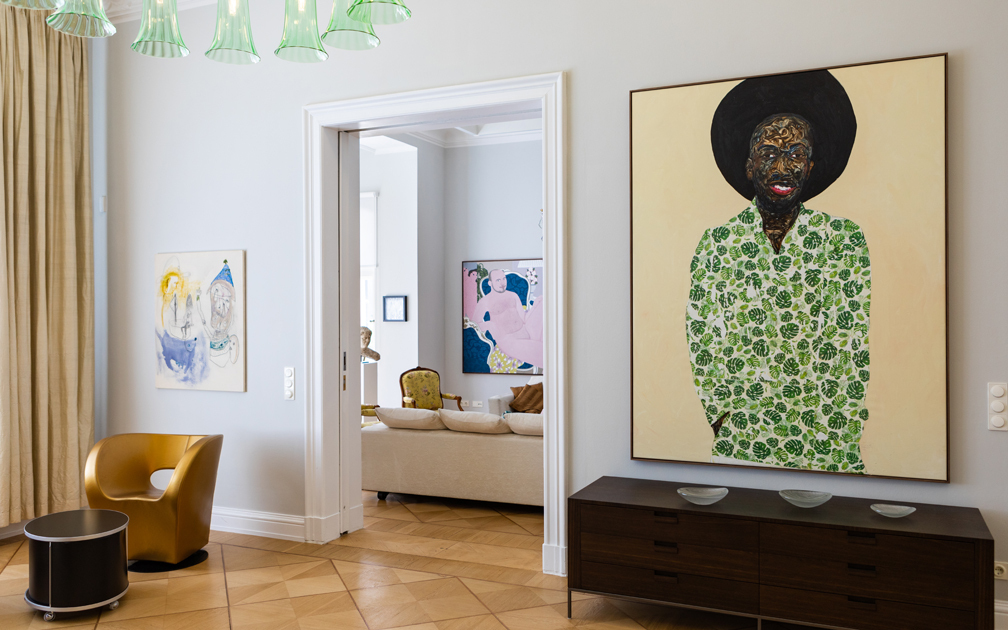
View in the salon of the Miettinen Collection with paintings by Janne Räisänen, Alexander Basil and Amoako Boafo
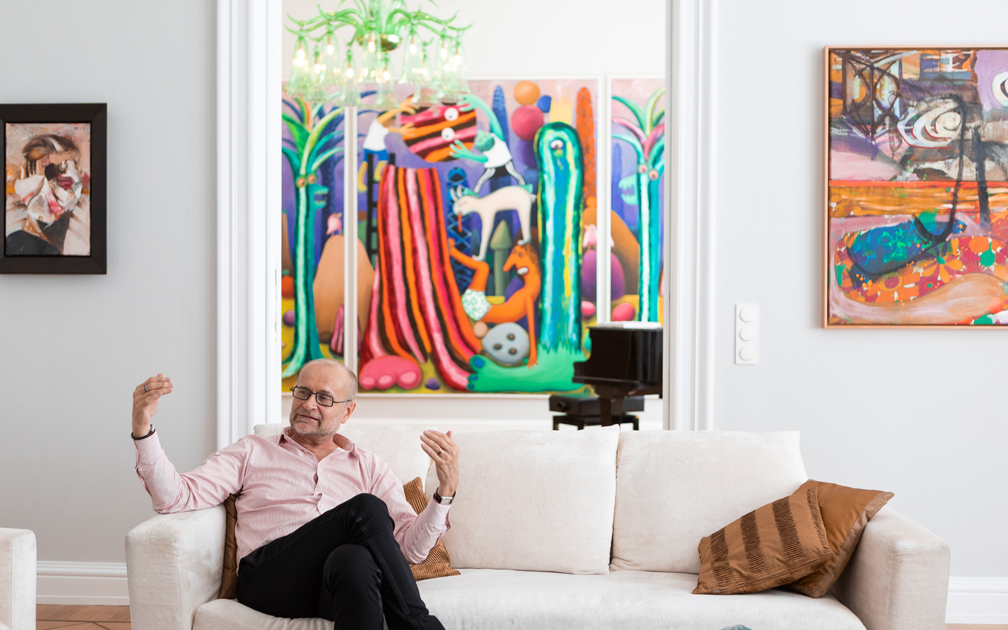
Timo Miettinen in front of pictures by Adrian Ghenie, Stefanie Gutheil, Albert Oehlen (left to right)
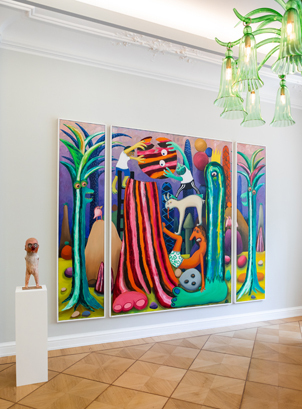
Sculpture by Tommi Tooija, painting by Stefanie Gutheil, chandelier by Davide Rizzo Architects
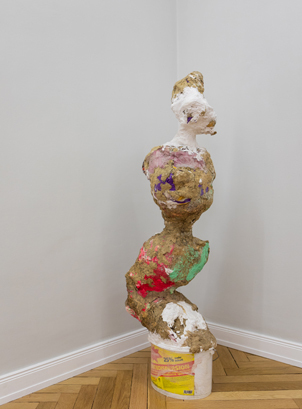
Sculpture by Franz West
So why did you decide to start a private and a corporate collection?
With a private collection, you are able to decide everything yourself. In our corporate collection we were four owners, my three sisters and I, and there is not always agreement. Now we are even more, my children and cousins are also involved, we are not all equally interested in art, so it can become a little complicated; one person wants to buy one thing, another something else. For me the ability to decide freely what is to be in my collection is important.
How large is the Miettinen collection?
Irrespective of whether a work of art belongs to my sisters, my daughters, or to me – all works are part of the Miettinen Collection. In total, the collection comprises about 1,200 works. I personally own about 80 percent of this collection. I often advise my family on purchases because I simply spend more time with art than do other family members; my mother laid the foundation of the collection. In the 1980s and 1990s I was very busy with the company and didn't really have time to concern myself with art, but I still went to a lot of galleries and began buying things here and there. I had an interest in art from the very beginning. My ex-wife Iris, with whom I am still very good friends, is an architect and had long been very interested in art. This love for architecture, design, and art connected us. Back then, Iris was my art advisor, however, at some point, she found it far too much and I began to buy art secretly, having the works delivered directly to the company or to the art warehouse, I simply couldn’t help myself, and it was then I realized that I had become addicted to collecting.
Does the collection have a specific focus?
About 30 percent of the collection is represented by Finnish artists, 30 percent are German, and the remainder is comprised of a range of other international artists. In the meantime, my collection has become so large, that I am able to create my own thematic exhibitions. Painting accounts for about 70 percent of the collection, followed by photography, sculpture, a few videos, and a great many drawings.
What interests you in art? Why don't you collect cars, for example?
The internationality of art interests me. During my professional life I have travelled a lot and have often had to deal with international clients and partners. I lived in Germany for a long time. Early on I was interested in an international view of Europe and the world, in which one is not only occupied with oneself, but is curious about other countries and cultures, views, possibilities and opinions, art reflects all of this, and that’s why collecting art is interesting for me.

Timo Miettinen with a plastic water jug
Design by Timo Sarpaneva OPA OY
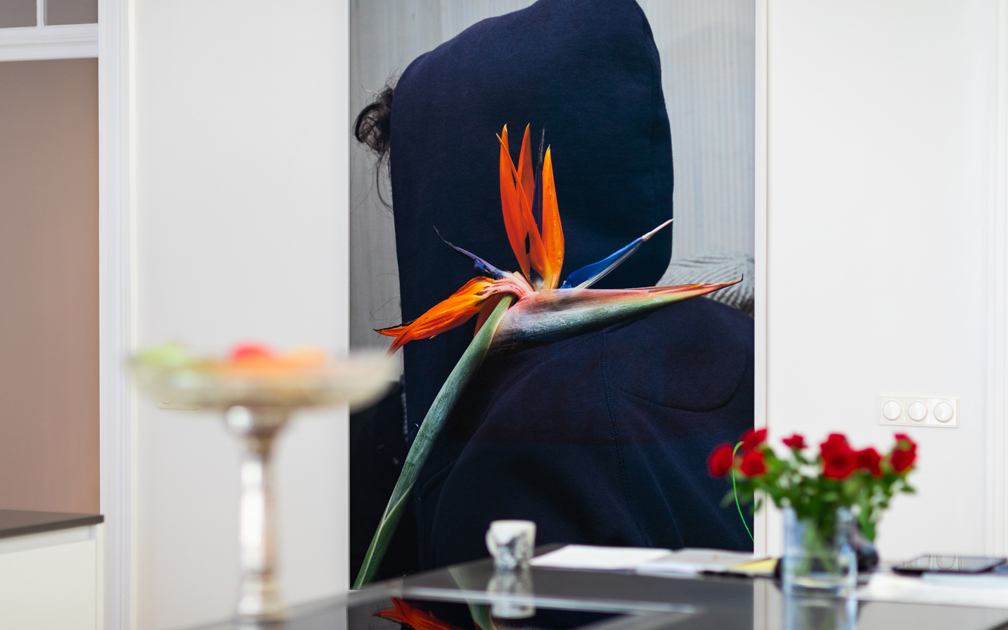
Photography by Paul Hutchison
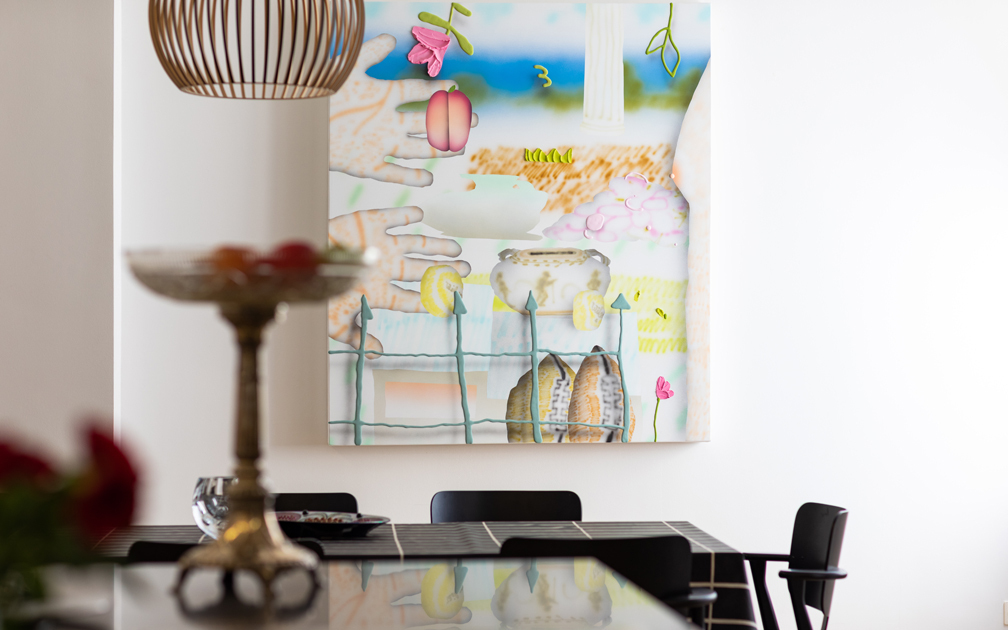
Image by Brandon Lipchik
What brought you to Germany and Berlin exactly?
I have had a long-standing relationship to Germany and the German language. My father had many business connections in Germany and wanted me to grow up with a familiarity with German culture. At one time I lived in Lüdenscheid and another time in Baden-Baden; I studied in Switzerland and Austria, I am a Finn interested in Germany for a variety of reasons, let’s put it that way. After the reunification, Berlin became a very interesting city for art and artists, and was not so far away from Helsinki. I found that compelling. At the same time, I wanted to invest in real estate. At some point, I stood in front of the house at Marburger Str. 3, where we are at the moment. I didn’t just want to make some kind of capital investment, rather I wanted to invest in something special. I began to look into the history of the house. It was important to me to create a cultural content for this house and for the Marburger Strasse.
Is this how “Salon Dahlmann” was created?
Yes, the idea was not only to show art, but also to revive the original concept of the salon from earlier centuries, as a meeting place for the exchange of ideas, music, art, etc. There are, for example, grand pianos here in the rooms that are used at evenings like that. In the last ten years, I have become more and more Berlinized, and now I also live in these rooms, and I like that very much. From 2012 to 2019 curated exhibitions and talks some curated by guests, were held here. The name of the salon refers to Hildegard Dahlmann, the daughter of the owner of the house, who lived here in the Beletage.
With the Salon Dahlmann and the Chronicle of Marburger Strasse 3, which was published in 2010, you have made an important contribution to the reappraisal of German-Jewish history. What role does the house play personally within your life?
The house and its eventful history are very dear to my heart. That’s why I asked the German-Finnish journalist Irja Wendisch to write a chronicle about the house. The house has had a significant influence on my decision to spend my life in Berlin. The premises were empty at the time, and looking back, I had the perhaps somewhat crazy idea of a Finn who actually knew little about Berlin, founding a salon, which has brought me great joy, and has probably proved of interest to the Berlin art world as well.
Is the cultural exchange between the two countries Finland and Germany especially close to your heart?
It is my great concern to show and perform the art and music of Finnish artists in order to make them more widely known. I have a very good contact with the Finnish Embassy and the Finnish Institute in Berlin, and although everything I do is on private initiative, we have already realized great joint projects and are in close exchange with each other. The Finnish Embassy Counselor for Press and Culture has her residence in our house. She often requests the loan of works from the collection, which she then shows in the residence to promote Finnish art and make it better known.
Are you still pursuing the salon concept today?
Of course, but at the moment, because of the Corona pandemic, no salon can take place. But I will definitely continue the salon once the pandemic has passed. Things change. When I am able to, I think I’m going to do more salons than before. So far, it has been more of an exhibition concept for collectors, friends, artists, and curators, and only very rarely was it about works in my collection. In the meantime my collection has grown substantially. I have also moved to Berlin permanently, and living here I want to have my art around me. As an example of the collection presentation, I would like to mention our summer exhibition 2020 Touch Me: Nudes from the Miettinen Collection.
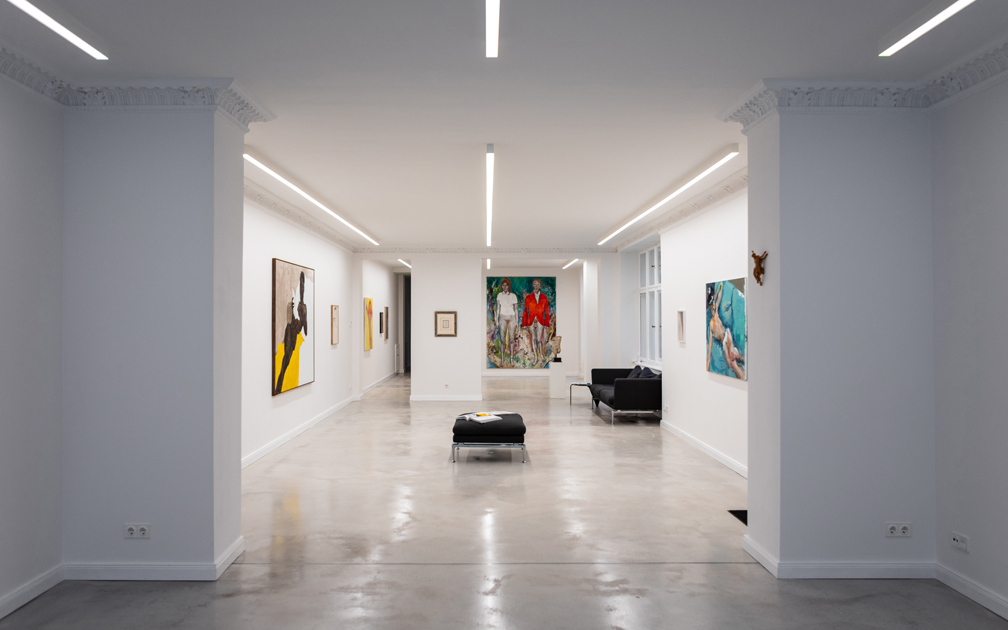
Exhibition view in the Miettinen Collection of the show "Touch Me: Nudes from the Miettinen Collection"
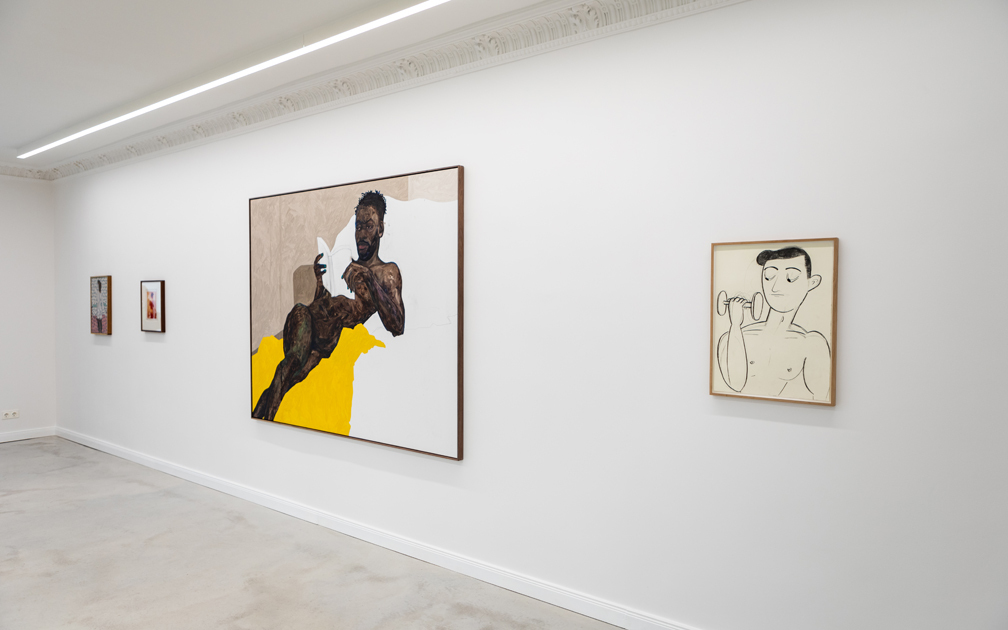
Exhibition view in the Miettinen Collection of the show "Touch Me" with pictures of Willam N. Copley, David Hockney, Amoako Boafo and Grace Weaver (left to right)
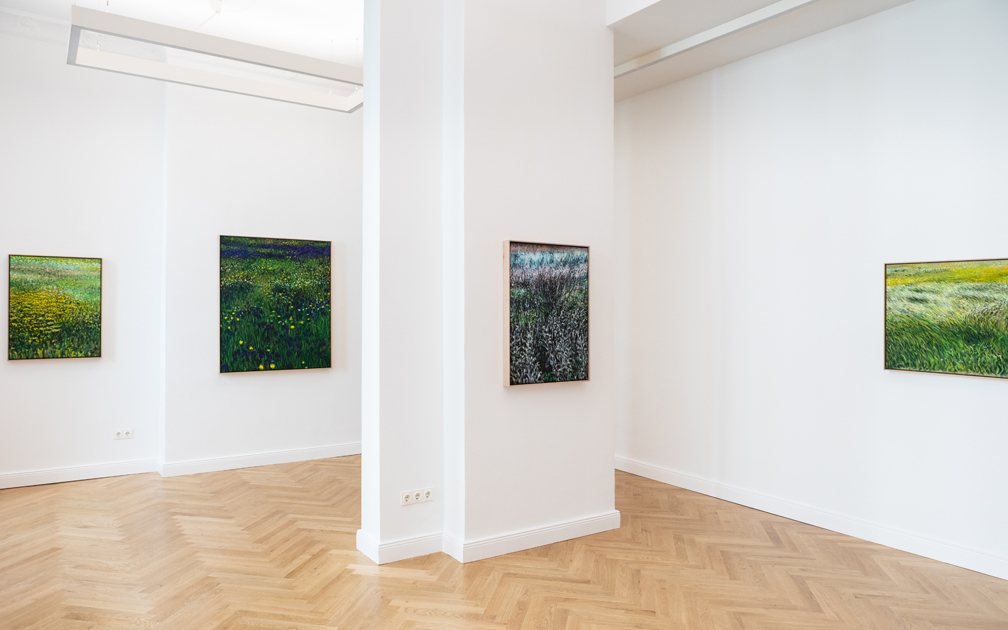
Exhibition view of the Miettinen Collection "Simple Sense of Existance" Eemil Karilla
You are known for having a good eye for the work of young artists long before they become internationally successful. What criteria do you follow when buying art?
I only collect for myself works that I like, and with no consideration for their market potential. Of course I have a sense of satisfaction when an artist develops well and becomes known in the market. But that's not the most important thing for me, and for that matter, I also collect works by artists who are already known and successful in the market.
Do you have favorite artists within the collection?
Yes, there are, for example Albert Oehlen and Secundino Hernández. Of the Finnish artists I like Matti Kujasalo and Lars-Gunnar Nordström, among others; both are Finnish constructivists. I would also like to mention the photographers Ola Kolehmainen and Niko Luoma. I am also very fond of Kirsi Mikkola and Marianna Uutinen, they are both great artists. I particularly like the work of the architect Alvar Aalto who is also an artist and designer. Of the younger generation, Ville Kylätasku and Janne Räisänen deserve special mention whom I have supported a great deal. But there are so many, it's impossible to list them all. Kirsi Mikkola is very important to me as a painter, and I also follow the work of her students. She teaches painting in Vienna at the Academy of Fine Arts. Through Kirsi I have met many exciting artists. Amoako Boafo is one of her students, and I just held a solo exhibition of his work, thanks to Kirsi I met him in 2016, long before he became successful in the art market.
In your collection there are also some examples of antique sculpture including a Roman torso. How do these/such works fit into what is otherwise an exclusively contemporary collection?
Twenty years ago I was in London and happened to pass by an antique shop. Suddenly it struck me that these objects are obtainable and that I could collect them. Since then, my plan has been to buy an antique sculpture each year. But I don’t adhere to that rigidly. I do think that certain works of antiquity complement contemporary art very well. It’s exciting to reflect over 2,000 years of art history and find themes that still have relevance today.
What you are describing right now in terms of your decisions when considering adding a work to your collection, sounds like a combination of intuition and strategy, could one characterize it in that way?
Yes, it's definitely both. Although “strategy” in the context of collecting sometimes infers that you only buy something as an investment in order to sell it again later for more than you initially paid for it. That’s not the way I collect. When I started collecting art twenty years ago, it was more of a “planned” purchase. So I certainly took advice on some decisions. In the meantime, however, I have seen a lot of art myself and have developed my own feeling for it, which goes deep. Today I also reflect my purchasing decisions against the background of the promotion of artists. That is an essential point. I have to like a work of art, without that it doesn’t work. If you then pay a fair price, it’s good for everyone involved. I have also bought art that – from a market perspective – has not developed well, yet I still like it today, and that is much more important to me than at an increased value. So far I have never sold a work from my collection, I have a very close connection with many of the artists whose work I own, and on that basis alone, it would be very difficult for me to sell one of their works.
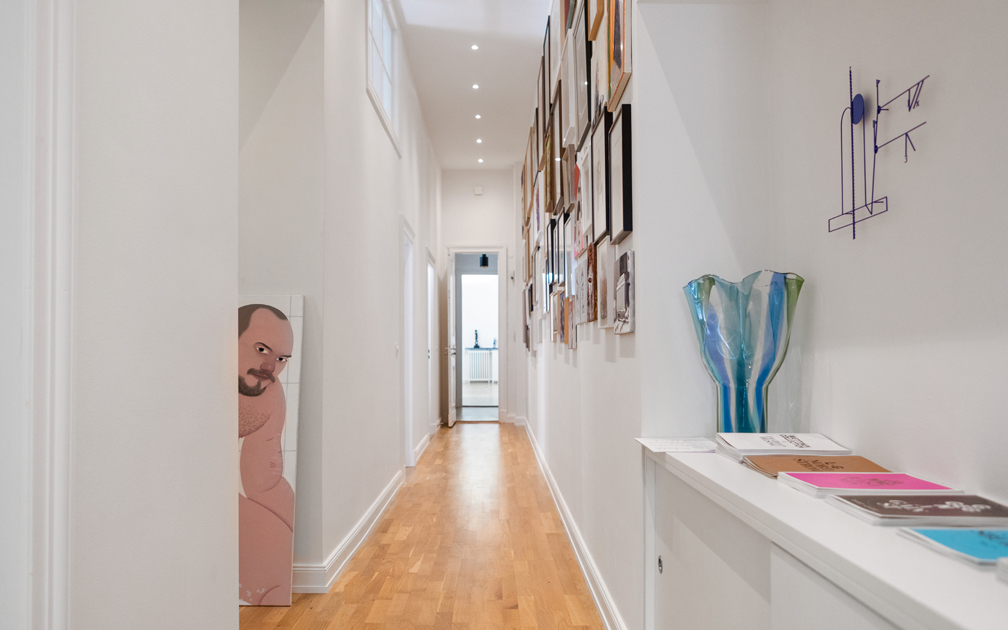
Petersburg hanging in the Miettinen Collection
Finnish art is still regarded as somewhat insipid in art history and it is associated mainly with photography and video art, which has much to do with the Helsinki school, do you have the feeling that this is about to change?
Finnish art could be a bit more present in the world. However, I have the feeling that it is changing a lot with the younger generation, and that's good. I would like to mention Antti Laitinen, for example. We have a video work and two two-dimensional tree works made of willow by him in the collection. This is a further development that takes me away from painting. Laitinen is very well represented internationally. Representation is always a problem for smaller countries. Germany, Spain, Great Britain, the United States – they have a lot of collectors who buy artists from their country. That is not the case in Finland. Finnish art collecting circles are very small. It is important that Finnish artists show their work internationally, yet a number of very good Finnish artists have so far gone unrecognized. Leena Luostarinen is one such case. She was a great artist and she is represented in almost all Finnish museums. But who knows her outside Finland?
Do you think that the art historical canon of the 20th century needs to be rewritten with regard to Finnish artists?
Yes, I think so. And I have made my contribution to it, for instance with the exhibition “Dreamaholic”, which took place in 2017 at the Weserburg Museum of Modern Art in Bremen. As a result, some artists have become better known and are now represented by galleries. In this way, I'm trying to break open these rigid historiographies. Finnish photographic art is, of course, always well regarded. Elina Brotherus is an important photo artist. She had a museum exhibition at Kunsthalle St. Annen in Lübeck, and is now having a show in Bremen at the Weserburg Museum. In both exhibitions loans from the Miettinen Collection are presented.
How many women are represented in the Miettinen Collection?
That has never been a central focus of mine. I did not pay attention to it, perhaps I should have. Looking at the collection now, I realize that more male artists are represented. I would like to change that in the future and increase the proportion of women artists in the collection. That is important to me now and would be more than fair. In addition to Kirsi Mikkola, whom I hold in such high esteem, the collection also includes works by Kris Lemsalu, Stefanie Gutheil, Aurora Reinhard, Karin Kneffel, Katharina Grosse, and many other women artists.
How would you advise someone who is just starting to collect art?
When you are young, try to buy the art that is relevant to the period in which you are living, then you may promote something that might be interesting later. And maybe it’s also a good investment. And if that does not happen, you will still have done something worthwhile.
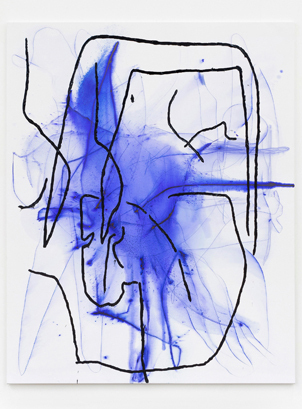
Jana Schröder, Spontacts GO 12, 2017, copying pencil and oil on canvas, 200 x 160 cm
Courtesy of the Miettinen Collection
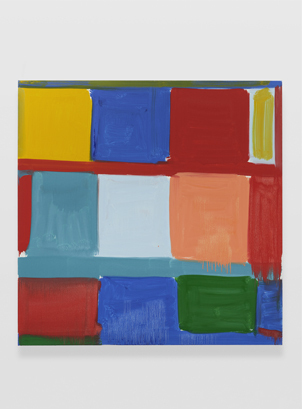
Whitney Stanley, Stay Song 44, 2019, oil on linen, 102 x 102 cm
Courtesy of the Miettinen Collection
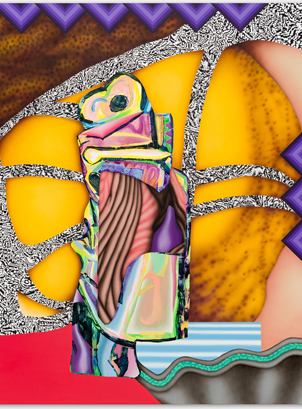
John Kleckner, Chringuito Strand, 2016, oil, acrylic, vinyl paint on canvas, 200 x 160 cm
Courtesy of the Miettinen Collection
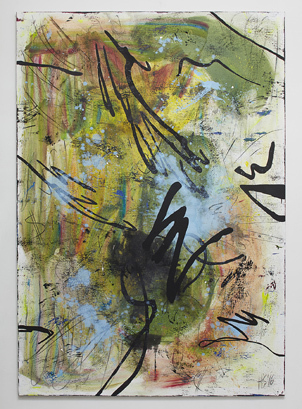
Henning Strassburger, Truther, 2016, oil on canvas, 300 x 210 cm
Courtesy of the Miettinen Collection
Interview: Dr. Sylvia Metz
Photos: Nora Heinisch
Links: Salon Dahlman


